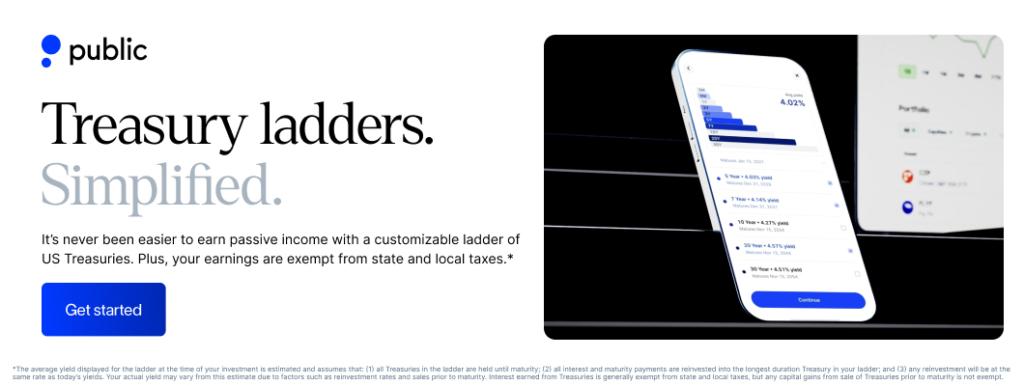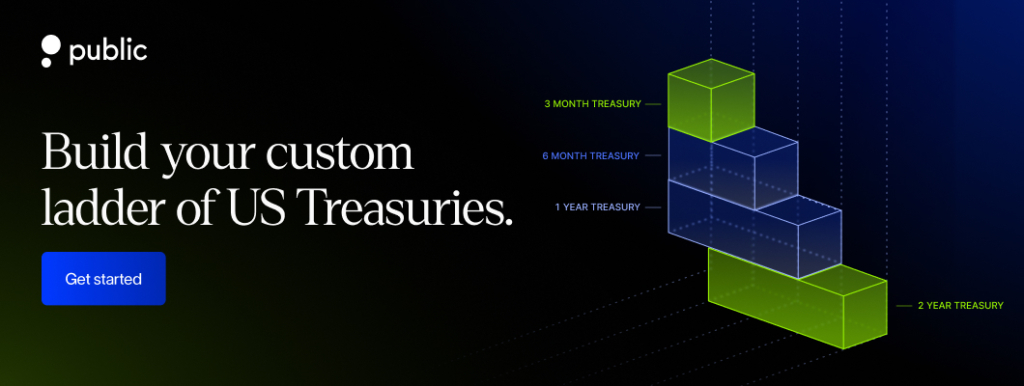For many investors, creating a diversified portfolio means expanding beyond equity markets (like stocks) and buying fixed-income securities (like bonds). The U.S. Department of the Treasury issues debt securities called Treasury bonds (aka Treasuries) that provide fixed income in the form of bond interest rate payouts over time.
Here’s a quick rundown of how they work and how you can buy them for your own portfolio.
Treasury bond – An overview
Here’s a quick overview of treasury bonds and how it works:
- They are long-term debt securities issued electronically by the U.S. Department of the Treasury.
- Mature in 20 or 30 years, depending on the type you buy.
- Have fixed interest rates that change at each auction (the round issued April 15 and 30, 2025 is 4.75% on 20 years and 4.625% on 30 years).
- Pay out fixed-rate interest every six months.
- Can be held to maturity or sold before maturity in the secondary market.
- Have a minimum purchase price of $100 and can be bought in $100 increments.
- Subject to federal income tax, but exempt from state and local taxes.
- Auction as new issues four times per year and re-openings eight times per year.
Ways to buy treasury bonds
There are several options to purchase treasury bonds. Let us understand them in more detail.
1. Through TreasuryDirect
You can buy treasury bonds directly at TreasuryDirect.gov., The U.S. Treasury’s online platform. They allow individuals to buy treasury bonds at auction, directly from the source. You need to create a TreasuryDirect account and take part in non-competitive bids.
2. Through mutual funds or ETFs
If you prefer not to buy individual bonds, you can invest in treasury bond mutual funds or ETFs (exchange-traded funds). Treasury bond mutual funds pool money from many investors to buy a diversified portfolio of U.S. Treasury securities. These funds are typically actively managed, meaning a fund manager decides which bonds to buy and sell based on the fund’s objectives.
Treasury bond ETFs are similar, but they trade on stock exchanges like individual stocks.
3. Through a brokerage firm
You can buy treasury bonds through brokerage platforms like Public.com, which may offer more flexibility, such as the ability to trade your bonds on the secondary market if you need liquidity before maturity.
How to invest in U.S. Treasuries on Public.com
Public makes it easy to invest in U.S. Treasuries and build a custom Treasury ladder—all from one platform. Follow these simple steps to get started:
1. Sign up for a treasury account
Download the Public app on iOS or Android, or sign up on the web. The onboarding process is quick and guides you through setting up your treasury account.
2. Fund your account
Easily add funds using bank transfer (ACH), debit card, or wire transfer.
3. Choose your US Treasury investment
Select from treasury bills, notes, or bonds with maturities ranging from 3 months to 30 years. Lock in your yield at purchase and enjoy state and local tax exemptions.
4. Complete your purchase
Review your selection, confirm your investment amount, and finalize your purchase. Your treasury investment will be added to your portfolio.
5. Manage your portfolio in one place
Track and manage your US Treasuries, stocks, ETFs, crypto, bonds, options, IRAs, and high-yield cash—all within Public’s platform.
Quick Tip
If you are exploring different government securities with a shorter maturity period ranging from a few weeks to a year, you can also learn more about Treasury bills for your short-term investments, these can be easily brought & sold through a broker like Public it may be helpful to learn the process of how to buy Treasury bills in our guide.
Conclusion
Buying Treasury bonds can be a straightforward process, whether you choose to go directly through the TreasuryDirect or use a brokerage platform like Public. Each method has its own features, potential benefits, and trade-offs. Before purchasing, you may want to consider your investment objectives, time horizon, and how Treasury bonds fit within your overall financial plan.
If you are exploring the option of purchasing Treasury bonds through Public, you can access them through a Treasury Account with maturities typically ranging from 20 to 30 years.
A treasury account on Public allows you to lock in your yield at purchase and benefit from state and local tax exemptions on interest. Public may help simplify the process while providing added liquidity and support.


